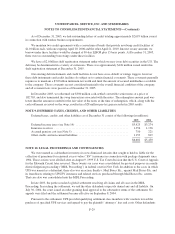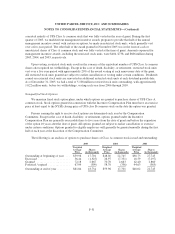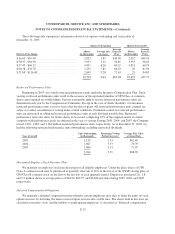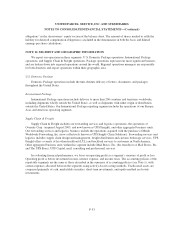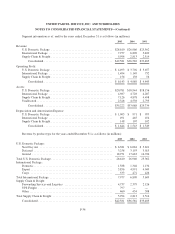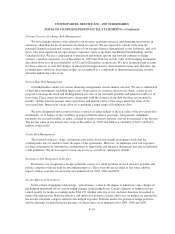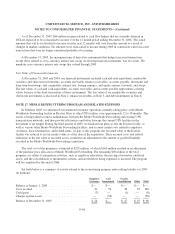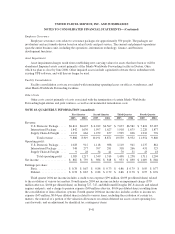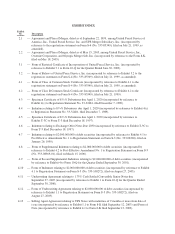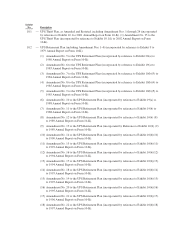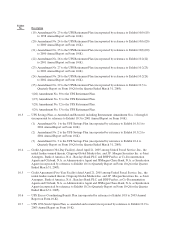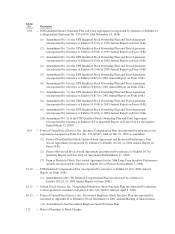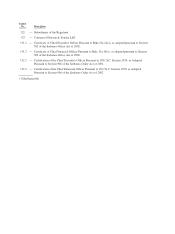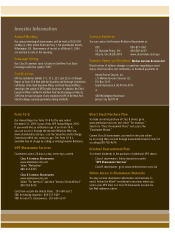UPS 2005 Annual Report Download - page 95
Download and view the complete annual report
Please find page 95 of the 2005 UPS annual report below. You can navigate through the pages in the report by either clicking on the pages listed below, or by using the keyword search tool below to find specific information within the annual report.UNITED PARCEL SERVICE, INC. AND SUBSIDIARIES
NOTES TO CONSOLIDATED FINANCIAL STATEMENTS—(Continued)
Foreign Currency Exchange Risk Management
We have foreign currency risks related to our revenue, operating expenses, and financing transactions in
currencies other than the local currencies in which we operate. We are exposed to currency risk from the
potential changes in functional currency values of our foreign currency denominated assets, liabilities, and cash
flows. Our most significant foreign currency exposures relate to the Euro, the British Pound Sterling, and the
Canadian Dollar. We use a combination of purchased and written options and forward contracts to hedge
currency cash flow exposures. As of December 31, 2005 and 2004, the net fair value of the hedging instruments
described above was an asset (liability) of $52 and $(28) million, respectively. We have designated and account
for these contracts as cash flow hedges of anticipated foreign currency denominated revenue and, therefore, the
resulting gains and losses from these hedges are recognized as a component of international package revenue
when the underlying sales occur.
Interest Rate Risk Management
Our indebtedness under our various financing arrangements creates interest rate risk. We use a combination
of derivative instruments, including interest rate swaps and cross-currency interest rate swaps, as part of our
program to manage the fixed and floating interest rate mix of our total debt portfolio and related overall cost of
borrowing. These swaps are entered into concurrently with the issuance of the debt that they are intended to
modify, and the notional amount, interest payment, and maturity dates of the swaps match the terms of the
associated debt. Interest rate swaps allow us to maintain a target range of floating rate debt.
We have designated and account for these contracts as either hedges of the fair value of the associated debt
instruments, or as hedges of the variability in expected future interest payments. Any periodic settlement
payments are accrued monthly, as either a charge or credit to interest expense, and are not material to net income.
The net fair value of our interest rate swaps at December 31, 2005 and 2004 was a liability of $(47) and $(32)
million, respectively.
Credit Risk Management
The forward contracts, swaps, and options previously discussed contain an element of risk that the
counterparties may be unable to meet the terms of the agreements. However, we minimize such risk exposures
for these instruments by limiting the counterparties to large banks and financial institutions that meet established
credit guidelines. We do not expect to incur any losses as a result of counterparty default.
Derivatives Not Designated As Hedges
Derivatives not designated as hedges primarily consist of a small portfolio of stock warrants in public and
private companies that are held for investment purposes. These warrants are recorded at fair value, and the
impact of these warrants on our results was immaterial for 2005, 2004 and 2003.
Income Effects of Derivatives
In the context of hedging relationships, “effectiveness” refers to the degree to which fair value changes in
the hedging instrument offset corresponding changes in the hedged item. Certain elements of hedge positions
cannot qualify for hedge accounting under FAS 133 whether effective or not, and must therefore be marked to
market through income. Both the effective and ineffective portions of gains and losses on hedges are reported in
the income statement category related to the hedged exposure. Both the ineffective portion of hedge positions
and the elements excluded from the measure of effectiveness were immaterial for 2005, 2004 and 2003.
F-39


